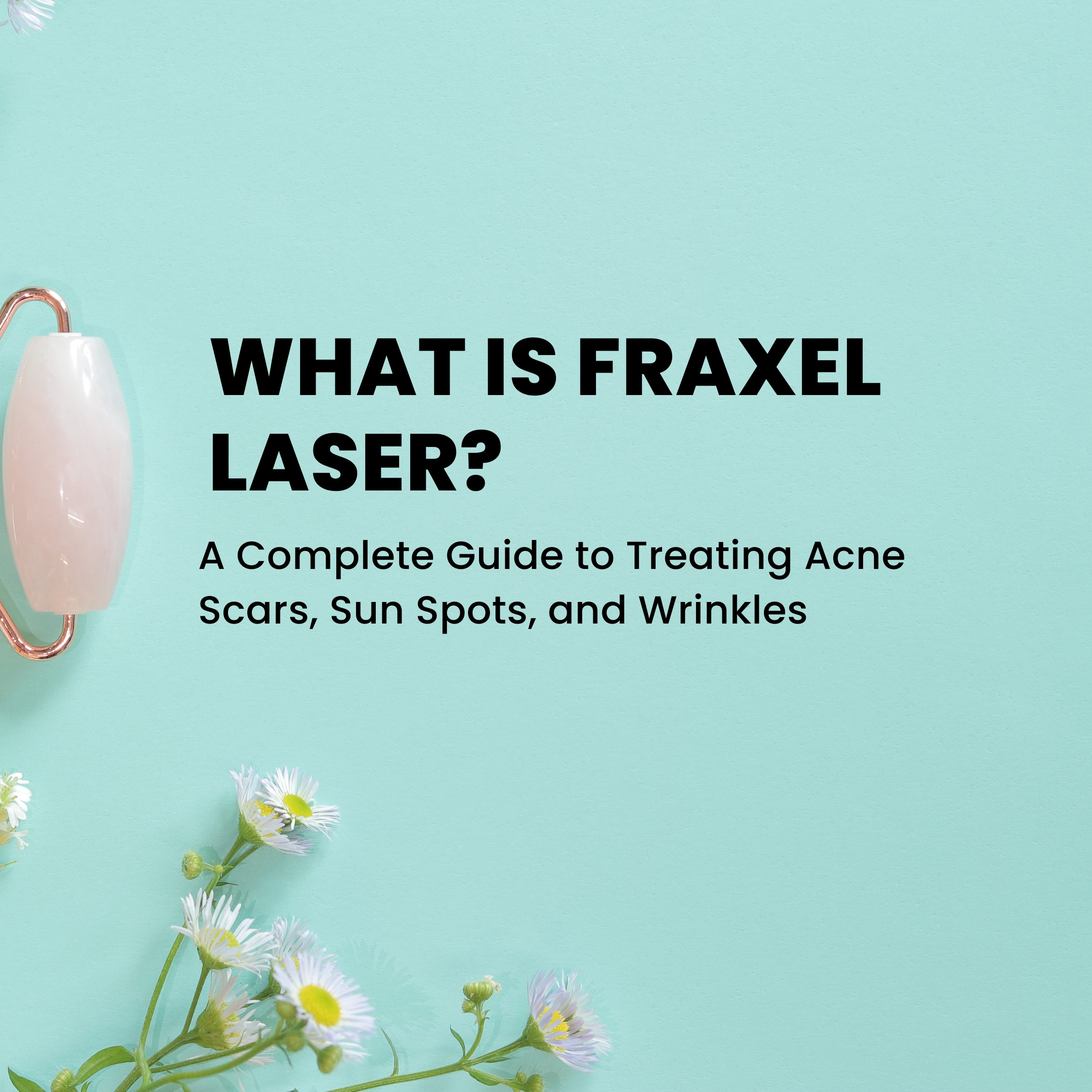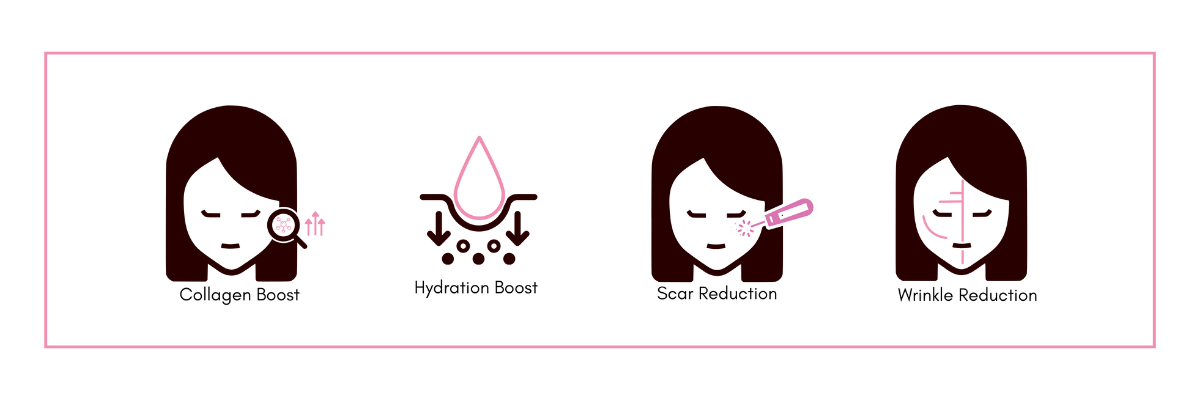
What Is Fraxel Laser? A Complete Guide to Treating Acne Scars, Sun Spots, and Wrinkles
When it comes to advanced skin resurfacing, Fraxel Laser is one of the most trusted treatments for improving skin tone, texture, and overall radiance. By targeting microscopic areas of the skin with laser energy, Fraxel stimulates natural collagen production while replacing damaged cells with healthy new ones. The result is smoother, firmer, and more even-toned skin. All with minimal downtime compared to traditional resurfacing lasers.
If you’re curious about how Fraxel works and whether it may be the right choice for your skin, here’s everything you need to know.
What Is Fraxel Laser?
Fraxel is an FDA-approved laser treatment that works by triggering your body’s natural renewal process. The laser creates thousands of microscopic treatment zones in the skin, which prompts the body to repair these tiny areas by producing fresh collagen and replacing old, damaged cells with healthy new ones.
As the skin heals from within, it becomes smoother, firmer, and more even-toned. Fine lines soften, dark spots fade, and scars gradually improve. All is part of your body’s own regenerative cycle.
Unlike traditional lasers that remove the entire top layer of skin, Fraxel only targets small areas at a time, allowing the surrounding tissue to speed up healing. A session typically takes 20–60 minutes, and most people can return to their normal activities within a few days.
Expert Insights
“If you are considering scar management after surgery, it is recommended that you visit a dermatologist and discuss scar management from the time the sutures are removed. For laser treatment, it is recommended that you consider starting it right away, one month after the wound begins to heal!”
- Dr. Kim Soo-young, Director of SY Dermatology

Benefits of Fraxel Laser
- Minimal downtime compared to traditional resurfacing lasers
- Improves skin tone, texture, and elasticity
- Stimulates collagen production for firmer skin
- Reduces fine lines and wrinkles
- Helps fade acne scars and surgical scars
- Reduces sunspots, pigmentation, and uneven skin tone
Risks and Side Effects of Fraxel Laser
When performed by a trained professional, the Fraxel laser is considered a safe treatment. Still, some temporary side effects may occur:
- Redness and swelling (similar to a sunburn)
- Dryness, peeling, or itching
- Temporary darkening of pigmentation before it lightens
- Rarely, infection or scarring may occur if aftercare is not followed properly
A consultation with a qualified provider is essential to determine if Fraxel laser is appropriate for your skin type and goals.
To understand if it truly fits your skin’s needs, an AI Skin Analysis can provide a clearer picture before starting treatment.
Is Fraxel Laser Right for You?
Since every skin is different, starting with an AI Skin Analysis can help you understand your skin type first and see if Fraxel Laser is the best fit for your needs.
Ideal Candidates
Fraxel may be well-suited for:
→ Individuals with acne scars or uneven skin texture
→ People noticing early fine lines or wrinkles
→ Those with sun damage, pigmentation, or age spots
→ Anyone seeking overall skin renewal without surgery
→ Patients with mild to moderate skin laxity who prefer gradual, natural results
Who Should Avoid Fraxel Laser
Fraxel may not be suitable for:
→ Sensitive skin: Try to avoid, but taking a certain dosage is fine
→ Individuals with very dark skin tones (due to risk of pigmentation changes)
→ Those with active acne, skin infections, or open wounds
→ Pregnant or breastfeeding women
→ Anyone taking medications that affect skin healing (like Accutane)
→ People with very loose or sagging skin are better suited for lifting procedures
Fraxel Laser for Your LuluTI Skin Type: Who Sees the Best Results
Fraxel is best for people with rough or uneven skin texture, including acne scars that appear as dents, as well as enlarged pores. It creates microscopic treatment zones to stimulate collagen and replace damaged cells, making it one of the best for smoothing scars and renewing overall skin quality.
It’s important to note that Fraxel is not intended for active acne and may worsen inflammation if used during breakouts. In the LuluTI system, “A” often reflects ongoing acne, but Fraxel is most relevant after breakouts have subsided, when visible scarring or texture irregularities remain.
From the LuluTI perspective, Fraxel supports multiple concerns:
- “T” (Texture): Best recommended for texture issues, since acne scars often show up as dents or uneven patches on the skin, making the surface look less smooth.
- “A” (Acne): Helps with the after-effects of acne by targeting residual scarring and skin irregularities rather than treating active breakouts.
It may also provide secondary benefits for:
- “P” (Pigmentation): May subtly fade sun spots or uneven tone in some patients.
- “W” (Wrinkle/loss of firmness): In some cases, it helps with early fine lines and elasticity.
Even if you have a "U" (Unflawed) or "S" (Smooth) profile, Fraxel can be a great preventive or maintenance treatment to keep your skin clear and vibrant, addressing early signs of sun damage and uneven texture before they become more pronounced.
To find out if Fraxel is for you, get a Lululab AI Skin Analysis. It will give you a clear understanding of your skin and recommend the best treatment for you.
What to Expect After Fraxel Laser Treatment: Timeline and Results
Fraxel Laser treatment works by triggering your body’s natural renewal process, so improvements develop gradually. Here’s a typical timeline:
▶ Right after treatment:
Mild redness, swelling, or a sunburn-like feeling. Skin may feel warm for several hours.
▶ Days 2–5:
Skin begins to feel rough or dry as microscopic “old skin” flakes off. This is a normal part of renewal.
▶ Weeks 1–2:
Skin tone starts to look brighter and smoother. Pigmentation begins to fade.
▶ Months 1–3:
Collagen remodeling continues. Fine lines soften, scars fade, and skin texture becomes more even.
▶ Months 3–6:
Results peak. Skin looks fresher, firmer, and healthier, with ongoing collagen support.
Fraxel Laser Aftercare: Tips for the Best Results
To maximize results and support healing:
- Do not pick or peel flaking skin. Allow it to shed naturally
- Avoid direct sun exposure for at least 1–2 weeks
- Apply broad-spectrum sunscreen daily (SPF 30 or higher)
- Keep skin moisturized and avoid harsh products (like retinoids) until cleared by your provider
- Consider a series of treatments (3–5 sessions) for best results, spaced about 4–6 weeks apart
Fraxel Dual vs. Fraxel Repair: Which Treatment is Best for You?
Fraxel laser treatments come in two main types, and the difference lies in how deep they work and how much downtime is needed:
- Fraxel Dual is a non-ablative treatment, meaning it heats tissue without removing the skin’s surface. It gently targets both deep and superficial layers to treat sun damage, pigmentation, fine lines, and acne scars. Recovery typically involves only a few days of redness and mild flaking.
- Fraxel Repair is ablative, meaning it removes tiny columns of skin while stimulating new collagen. It’s more intensive, making it effective for deep wrinkles, severe sun damage, and advanced scarring. Downtime is longer, typically one to two weeks, but results are more dramatic.
Fraxel Dual is best for gradual, low-downtime renewal, while Fraxel Repair is designed for deeper, more transformative results
Next Steps for your Fraxel Laser journey
Fraxel Laser is a safe, non-surgical treatment to refresh your skin, smooth scars, and restore a youthful glow. If you’re considering it, the best next step is scheduling a consultation with a qualified dermatologist or aesthetic provider who can assess your skin and create a tailored plan.
Fraxel Laser FAQs: Everything You Need to Know Before Starting
1. How many Fraxel sessions will I need?
Most patients need 3–5 treatments, spaced 4–6 weeks apart, for optimal results.
2. Is Fraxel painful?
A numbing cream is applied before treatment. Most people describe the sensation as warm or prickly but tolerable.
3. How long do Fraxel results last?
Results are long-lasting, often several years, especially with good skincare and sun protection.
4. Can Fraxel be combined with other treatments?
Yes, many patients combine Fraxel with injectables, chemical peels, or skin boosters for enhanced results.
5. What areas can Fraxel treat?
Common areas include the face, neck, chest, and hands. Anywhere with sun damage, scars, or aging changes.

